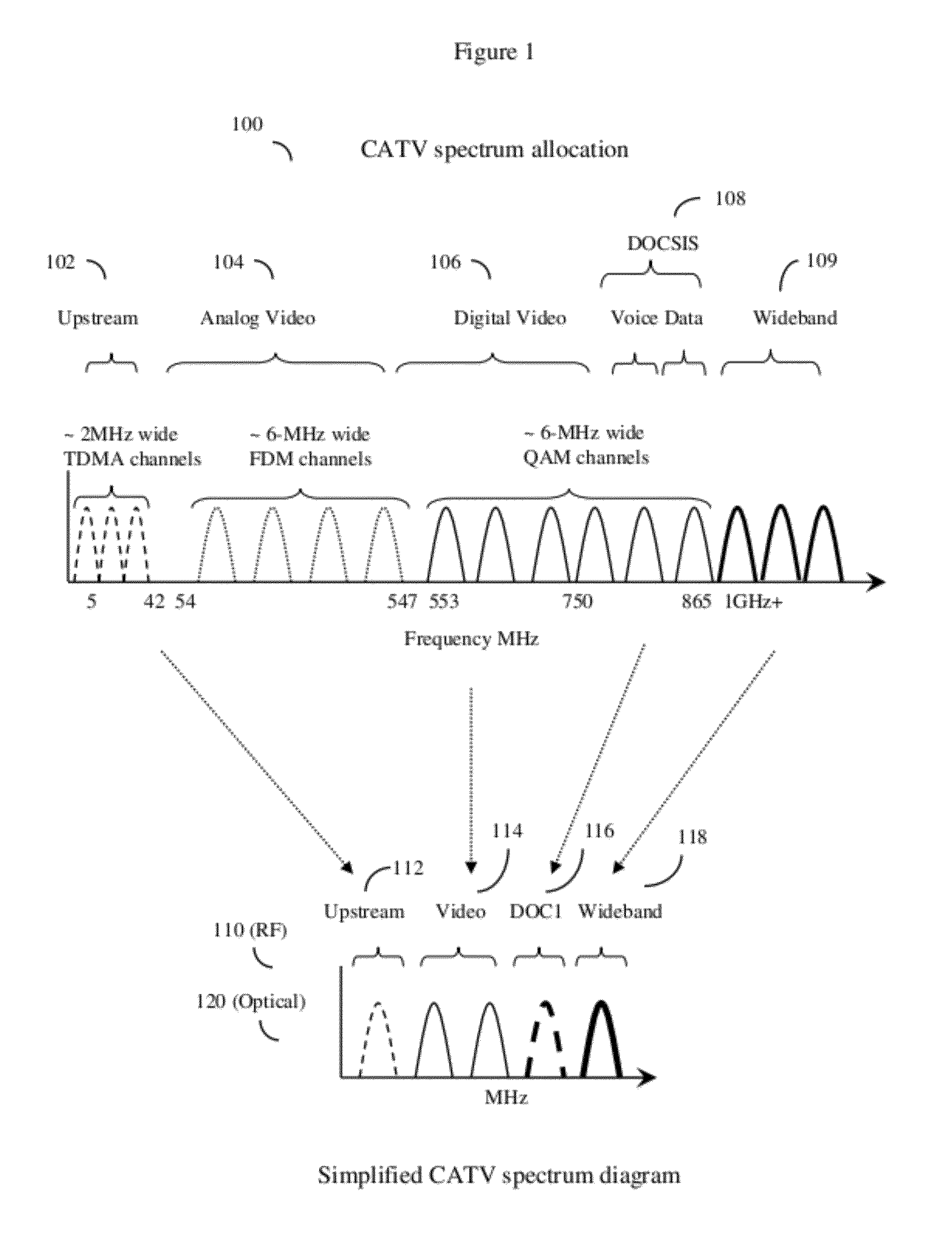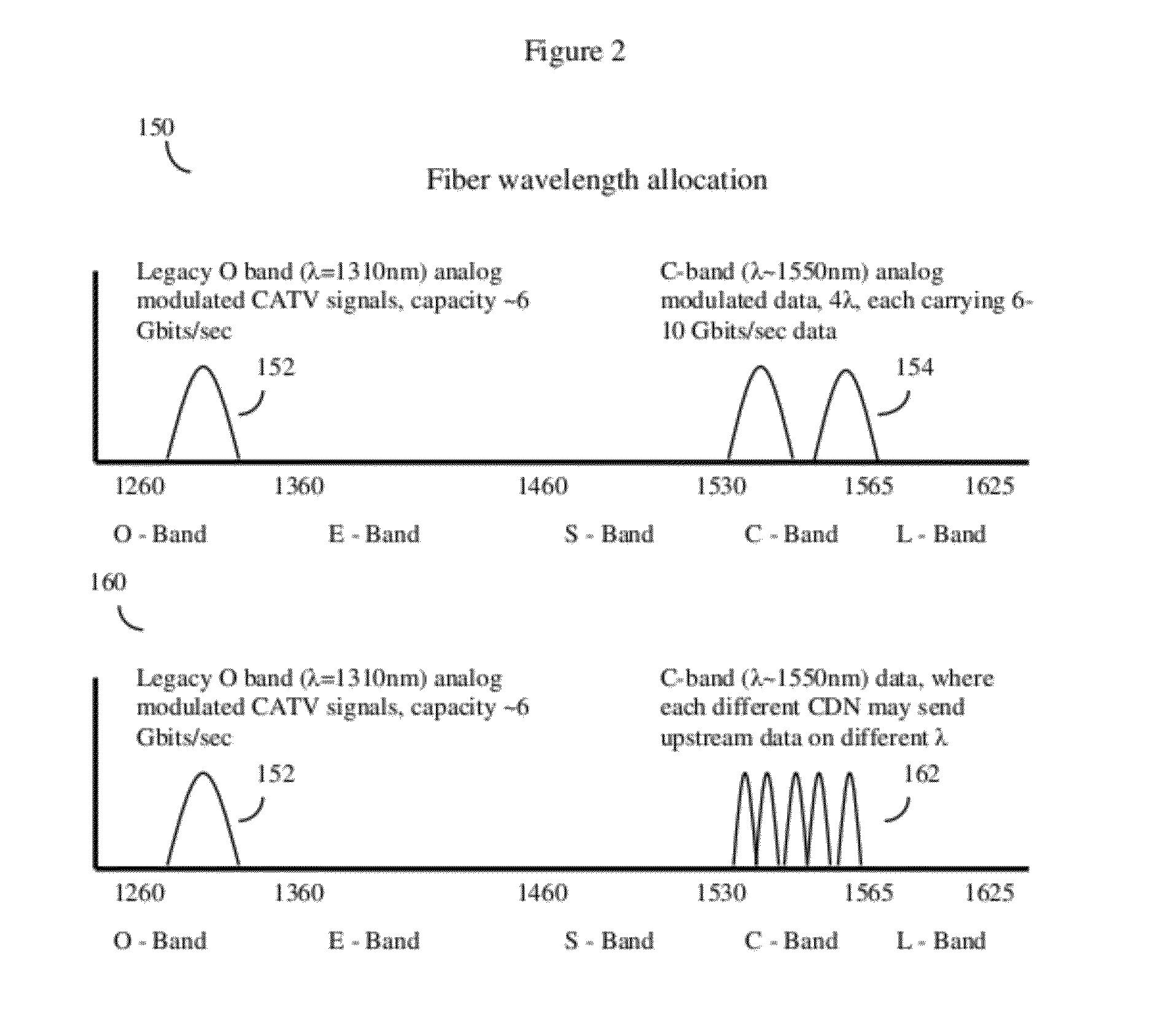Hfc cable system with wideband communications pathway and coax domain nodes
a technology of wideband communication and coax domain nodes, which is applied in the field of cable television and hybrid fiber cable systems, can solve the problems of still existing sort of attenuation, and achieve the effects of extending the data carrying capacity of a hybrid fiber cable network, enhancing upstream capability, and high backward compatibility
- Summary
- Abstract
- Description
- Claims
- Application Information
AI Technical Summary
Benefits of technology
Problems solved by technology
Method used
Image
Examples
Embodiment Construction
[0037]In one embodiment, the invention may be a system and method for enhancing data carrying capacity of a hybrid fiber cable (HFC) network with a cable head end, at least one optical fiber, at least one optical fiber node terminating on at least one CATV coaxial cable, (CATV cable). This CATV cable will often be connected to a plurality of other branch CATV cables thus forming a CATV Tree and Branch Network. Usually a plurality of various types of communication devices (e.g. set top boxes, cable modems, Ethernet terminals, etc.) will be connected to this CATV Tree and Branch Network at various places.
[0038]Although standard (e.g. prior art optical fiber nodes) or slightly modified prior art optical fiber nodes may often be used for the invention, in a preferred embodiment, the optical fiber node itself will have some unique capabilities, such as the ability to carry out various Coax Doman Node functions to be described.
[0039]The invention relies on sending both non-standard CATV R...
PUM
 Login to View More
Login to View More Abstract
Description
Claims
Application Information
 Login to View More
Login to View More - R&D
- Intellectual Property
- Life Sciences
- Materials
- Tech Scout
- Unparalleled Data Quality
- Higher Quality Content
- 60% Fewer Hallucinations
Browse by: Latest US Patents, China's latest patents, Technical Efficacy Thesaurus, Application Domain, Technology Topic, Popular Technical Reports.
© 2025 PatSnap. All rights reserved.Legal|Privacy policy|Modern Slavery Act Transparency Statement|Sitemap|About US| Contact US: help@patsnap.com



